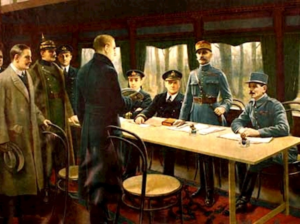
Hull Citizens celebrated the end on the war on the 11th November 1918. Bells pealed from the church towers; the shipyard closed down until Thursday; munitions works closed all day; and schools that were not already closed by the ‘Spanish Flu’ epidemic got a half day holiday. The streets were thronged with people all afternoon and evening. There were intermittent displays of fireworks, despite them being viewed by some as wasteful. The joy was somewhat restrained because few families in the town had escaped bereavement. Rationing was relaxed in the run-up to Christmas. 12 days Christmas leave was granted to all men serving at home. On December 14th there was a relaxation of lighting restrictions and early closing of shops. In a special edition of the Hull daily Mail, published at 11am, on the 11th November 1918, it was proclaimed to be:-
“A SUPREME MOMENT It is officially announced that the armistice with Germany was signed this morning. The bloodshed is over. The strife is done. It is a moment which fills the heart with unutterable emotion, but the profoundest tendency among many of us will be to thank God for it upon our knees. Our first thoughts, after that, will go out to our sons, husbands, and brothers on the sea, and in the field. We may be sure that their joy is inexpressible. They have conquered ! They have won the war ! Britain has laid down over a million precious lives, but they have not died in vain. May the noble spirits and souls of the righteous gaze upon our flags of rejoicing – may it be sober and seemly everywhere – and of victory today. It is finished ! The “Great War” is over…the supreme task is achieved, and we are fighting an embattled people no longer.”
After the end of the War the public feeling was that returning ex servicemen should receive priority in the allocation of smallholdings, known in the East Riding as Cottage Holdings. These former soldiers were known as ‘preferred tenants’ who could ultimately apply to their local council for a loan to purchase their house with its adjoining land. Several of these smallholdings can be seen on the A1174 as it passes through Woodmansey and Dunswell.
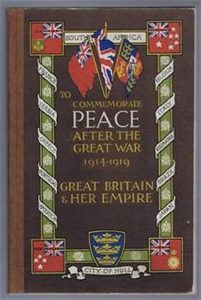
With this relief, there was also sorrow at the large loss of live. Hull alone had lost over 7,500 men in the war, with another 14,000 disabled from an estimated 70,000 men who had served in the forces. Neighbouring Hull Towns and villages also suffered, such as Beverley (452 deaths), Cottingham (105), Hessle (104), Hedon (18) and hundreds more men from the many small villages, which surround Hull in the East Riding of Yorkshire.
In the absence of any modern Welfare State, that we might recognise today, Hull raised it’s own Charitable War Trust to help the disabled and families of the war dead, The Hull Civic Trust started in 1918, raised money through business donations and voluntary contributions. By 1927, 1,040 recipients had received £74,000 between them and the Trust continued to assist until closed in 1981. The war had affected everyone in some way, and the life for many could never be the same again.
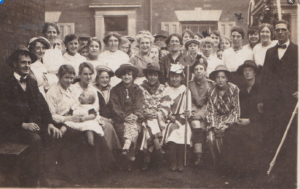
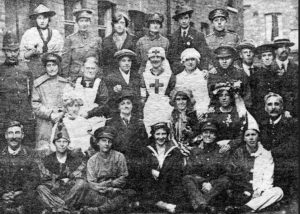
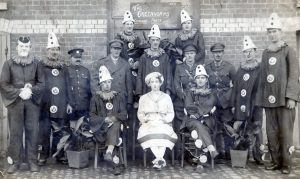
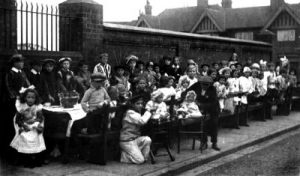
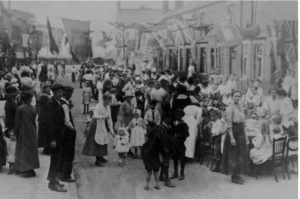
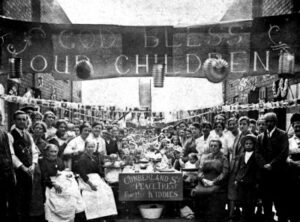
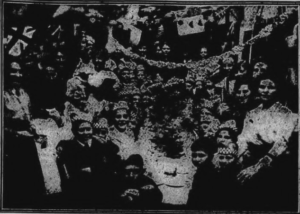
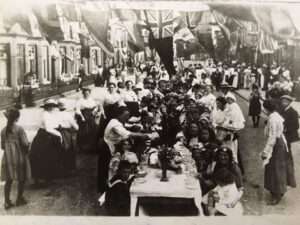
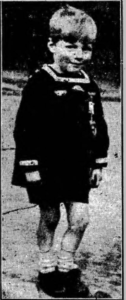
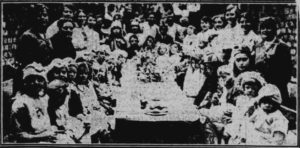
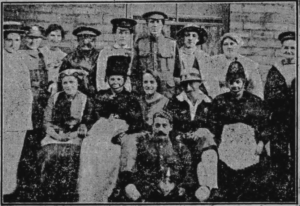
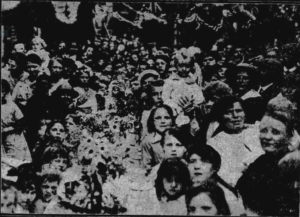
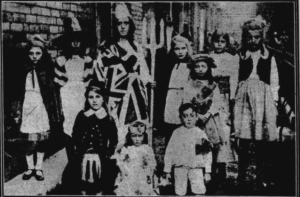
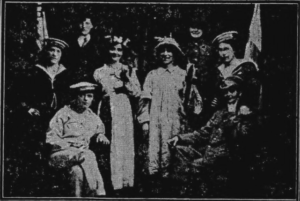
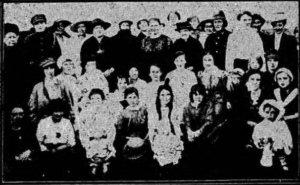
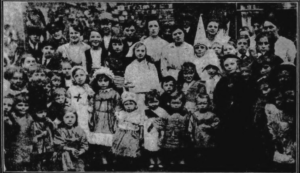
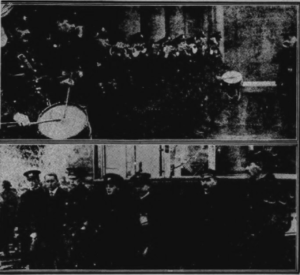
Hull WW1 Peace Party. Hull Daily Mail
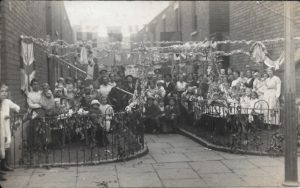
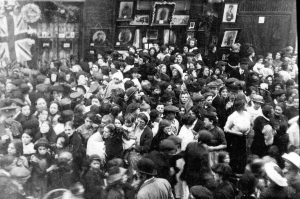
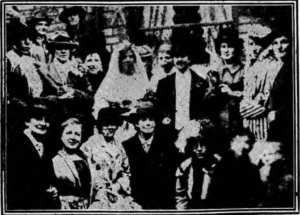
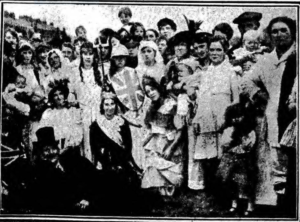
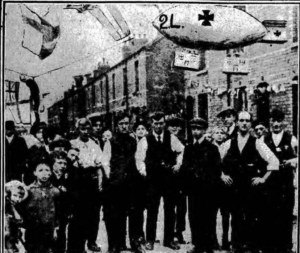
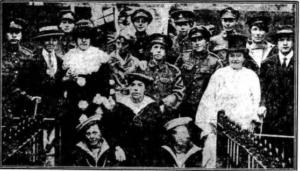
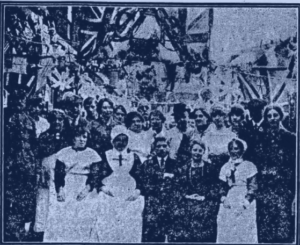
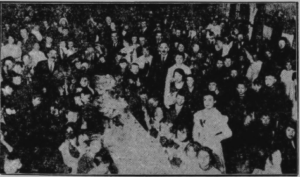
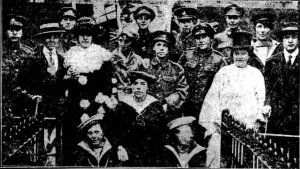
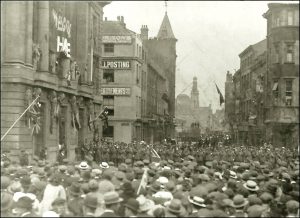
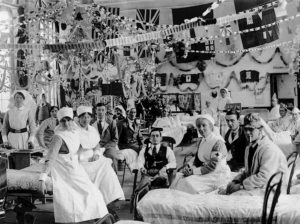
Hull Street Memorials – https://www.ww1hull.com/hull-street-shrines/
The first and earliest war memorials in Hull, were the ‘Street Shrines’ or ‘Rolls of Honour’ in 1915. While Street memorials were popular, they relied on the goodwill of residents to maintain them. Inevitably these ‘Rolls of Honour’. could not keep pace with conscription, or the movement of men transferring between regiments and other armed services. There was also some opposition to the memorials, with people refusing to include their names, or saying that the money should be spent on the troops at the front. Some complained that names had been miss-spelt, or ignored or contained other errors.
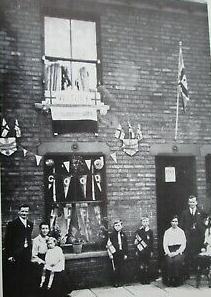
The memorials were often too small to record the increasing numbers of casualties. For example, Bean Street, with a population of over 3,000 people, saw hundreds of men enlist and over 100 men killed. The declining enthusiasm for war, meant that many Street memorials were not updated after 1916. They often fell into neglect, were lost and forgotten. They were sometimes inaccurate, with many mistakes, errors and omissions. The Eton Street, memorial, bears little resemblance to its original, which included many more names of men killed in the war. Also, most ‘Street Shrines’ were only designed as temporary structures and were not built to be long lasting. Some were merely names written on paper and exposed to the weather and elements. Many Street memorials were destroyed during the bombing of Hull in 1941. Others were lost through slum clearance in the 1970’s, and post war reconstruction. This ‘ww1hull.org.uk’ site, recreates these lost Street memorials. Hull had many more Street Memorials during the First World War. While these have now largely disappeared you can search this website to find the casualties on each street in Hull. This website records over 9,000 men from Hull or with a Hull connection. Their addresses come from local newspapers, army records, Census details or local trade directories.
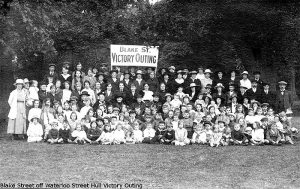
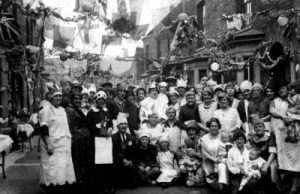

Wonderful learning more history about hull